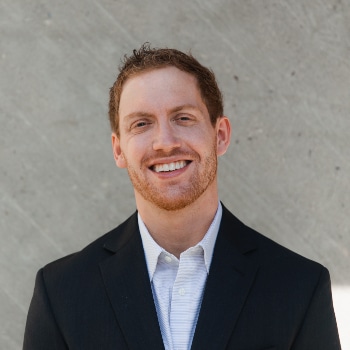Every so often, we all become a little uneasy or slightly worried when we face normal everyday stresses. This feeling is called anxiety, and it is perfectly normal to feel it a little bit every now and then.
But when does anxiety become a disorder? The simple answer is that anxiety becomes a disorder when it begins to interfere with your ability to function, affect the things you do, how you interact with others in your everyday life, and when your symptoms present for six months or longer.
When Stress Becomes Too Much
When stress becomes too much, it can start to affect how you live your life. You may begin to avoid the places you normally go to, the things you like to do, and even the people in your life.
Other people may begin to take notice. Your coworkers may start to notice absences or that you are not mentally present with them. You may suffer in your home life, with relationships, or even in school.
Types of Anxiety Disorders
There are many types of anxiety disorders. Generalized anxiety disorder (GAD) is the most commonly diagnosed. You may be struggling with GAD if you have symptoms for six months or longer and experience feelings of tenseness or nervousness, lapses in emotional control, changes in sleep patterns, and loss of concentration, among other symptoms.
Other types of anxiety disorders can include:
- Panic disorder (PD)
- Social anxiety disorder (SAD)
- Post-traumatic stress disorder (PTSD)
- Obsessive-compulsive disorder (OCD)
Anxiety Disorders and Classical Conditioning
Anxiety disorders are generally characterized by stress and worry leading to irrational behaviors that interfere with how we interact with the world around us. Unlike other anxiety disorders, PTSD and OCD cause definitive changes in how an individual lives. Those with PTSD may avoid situations that remind them of the traumatic event which caused their illness. On the other hand, people with OCD may adopt new behaviors to counteract paranoid delusions that intrude on their thoughts.
What Is Obsessive-Compulsive Disorder?
An individual with OCD experiences recurring, paranoid thought patterns, such as believing their house will burn down if they leave it. These thoughts cause compulsions or behaviors that the individual repeats and which they believe will prevent the disaster from occurring.
OCD: Causes and Risk Factors
We do not know what causes OCD. What we do know is that certain factors play a part, including:
- Genetics
- Brain structure and functioning
- Environment
Some researchers have also found links between trauma in childhood and OCD in adulthood.
Obsessive-Compulsion: The Statistics
According to the National Institute on Mental Health (NIMH), 1.2% of American adults have OCD. It is also more common for females than males to have OCD. More than half (50.6%) of people with OCD demonstrate severe symptomology, compared to one-third (34.8%) who have moderate symptoms. A much smaller percentage (14.6%) present mild symptoms.
OCD is also more common in individuals below the age of 60. Individuals over 60 with OCD make up only about half a percent of the US population, while about 1.5% of individuals 18-29 present symptoms of OCD.
What Is Exposure and Response Prevention Therapy?
Exposure and response prevention (ERP) immerses the individual in the environmental cause of their anxiety. It is a therapeutic treatment that uses operant conditioning, a behavior modification technique that seeks to change negative behaviors so that we can lead happy, productive lives.
People who struggle with anxiety disorders, including OCD, tend to avoid the situations that cause their catastrophic thoughts. ERP is a good way to overcome those avoidant behaviors by allowing the individual to see that those situations do not cause the bad things they imagine to happen.
Cognitive-Behavioral Therapy and ERP
ERP has its roots in cognitive-behavioral therapy (CBT), and the two are intrinsically tied. The way we think, act, feel, and present ourselves are holistic. CBT is founded on the belief that if the way you present yourself becomes a negative behavior, that behavior can be changed by changing the way you think about yourself.
CBT urges individuals to look at the internal forces that hold them back. In ERP, individuals with anxiety disorders look at the external forces that cause them stress and confront those stressors directly.
How ERP Treats Anxiety and OCD
ERP is an evidence-based treatment for OCD. Clinical researchers have found repeatable evidence in studies showing great efficacy in ERP for treating OCD and anxiety disorders. By helping those with anxiety confront their catastrophic thoughts, therapists can quash the irrational fears that drive these disorders. Some of the techniques they might use are:
- Exposure: Having the individual confront their obsessive thoughts
- Response Prevention: Having the individual avoid the compulsion, such as washing the hands for no reason
- In Vivo Exposure: Exposing the individual to actual situations that cause their fear
- Imaginal Exposure: Having the individual imagine their obsessive situation without performing the compulsion
- Interoceptive Exposure: Having the individual experience the physical sensations associated with their catastrophic thoughts
Why ERP Works
After each session, the individual will process what they experienced with their skilled therapist. In processing the ERP treatment, the individual can begin to understand why their catastrophic thoughts are irrational, leading to the cessation of those thoughts, also known as extinction. Eventually, the fears that begin with obsession and lead to compulsion will start to dissipate, and the individual will find they no longer struggle in their daily lives.
Persistent feelings of anxiety and fears about what might happen can be debilitating. Worries about school, work, family, and everyday life can drag you down and keep you from living a happy and successful life. If you live with recurrent anxiety and worries, if your anxiety has caused you to change your behaviors, or if you experience compulsions, and if you have experienced these feelings for six months or longer, you may be struggling with an anxiety disorder. Seeking treatment for an anxiety disorder, PTSD or OCD can change your life for the better and allow you to begin living again. The caring and dedicated professionals at SoCal Mental Health are here to help you on the path to recovery. Our clinicians are experienced and knowledgeable in treatments and therapies, including ERP. Call us today at (949) 502-2041 to learn more about our services.












